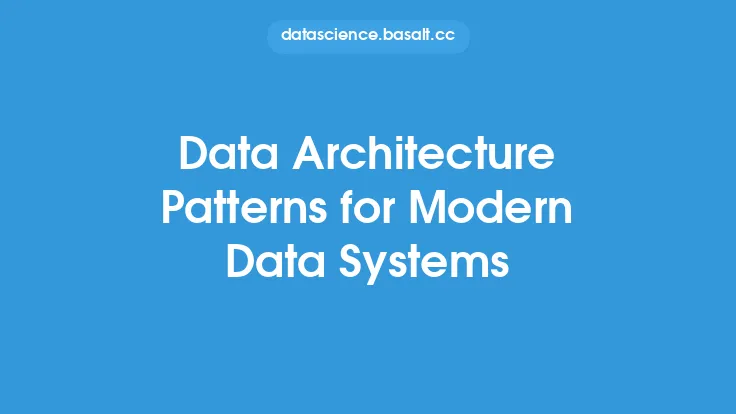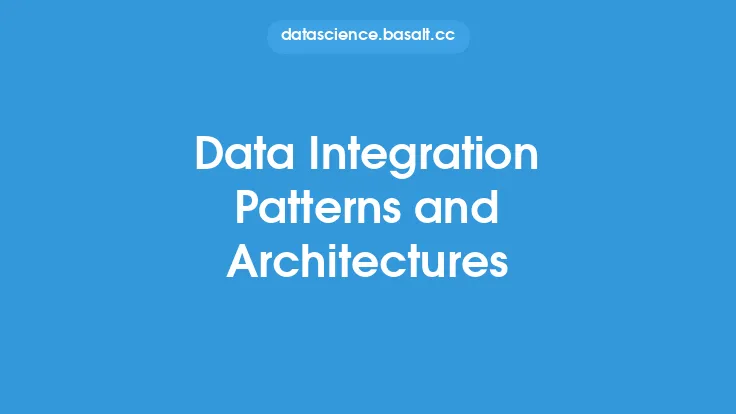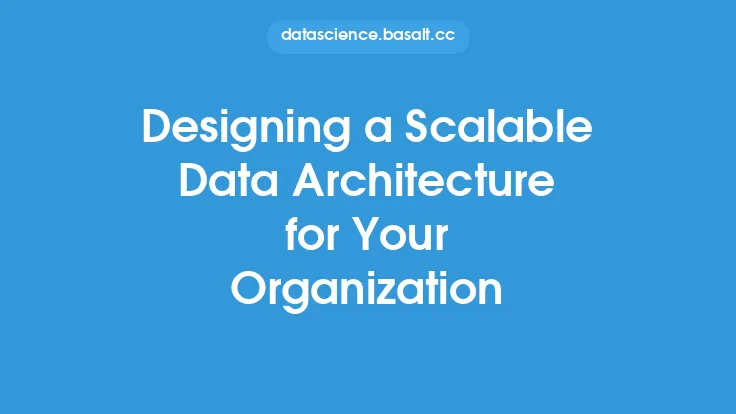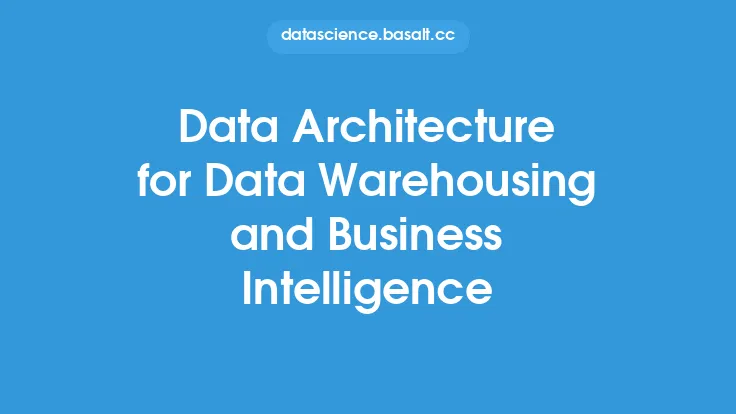In today's data-driven world, organizations are constantly seeking ways to improve their data systems to stay competitive. A well-designed data architecture is crucial for supporting business growth, enabling real-time analytics, and ensuring data quality. Data architecture patterns provide a framework for designing and implementing modern data systems that can handle the complexities of large-scale data processing, storage, and analysis. In this article, we will explore the different data architecture patterns that can be used to build modern data systems, their characteristics, and the benefits they offer.
Introduction to Data Architecture Patterns
Data architecture patterns are pre-defined templates or designs that can be used to build data systems. These patterns provide a proven approach to designing and implementing data systems, reducing the risk of errors and improving the overall quality of the system. Data architecture patterns can be categorized into several types, including data warehousing, data lakes, data virtualization, and data mesh. Each pattern has its own strengths and weaknesses, and the choice of pattern depends on the specific requirements of the organization.
Data Warehousing Pattern
The data warehousing pattern is a traditional approach to data architecture that involves storing data in a centralized repository. This pattern is suitable for organizations that have a large amount of structured data and require fast query performance. A data warehouse is a database that is designed to support business intelligence activities, such as reporting, analysis, and data mining. The data warehousing pattern typically involves the following components: data sources, data integration, data storage, and data access. Data sources provide the raw data, data integration is responsible for transforming and loading the data into the warehouse, data storage is the repository that holds the data, and data access provides the interface for querying and analyzing the data.
Data Lake Pattern
The data lake pattern is a more recent approach to data architecture that involves storing raw, unprocessed data in a centralized repository. This pattern is suitable for organizations that have a large amount of unstructured or semi-structured data and require flexibility in their data analysis. A data lake is a storage repository that holds raw data in its native format, allowing for flexible schema design and data processing. The data lake pattern typically involves the following components: data ingestion, data storage, data processing, and data analysis. Data ingestion is responsible for collecting and loading the data into the lake, data storage is the repository that holds the data, data processing is responsible for transforming and preparing the data for analysis, and data analysis provides the interface for querying and analyzing the data.
Data Virtualization Pattern
The data virtualization pattern is an approach to data architecture that involves providing a virtualized layer of data access and integration. This pattern is suitable for organizations that have multiple data sources and require a unified view of their data. Data virtualization involves creating a virtualized layer that abstracts the underlying data sources, providing a single interface for data access and integration. The data virtualization pattern typically involves the following components: data sources, data virtualization layer, and data access. Data sources provide the raw data, the data virtualization layer provides the virtualized interface, and data access provides the interface for querying and analyzing the data.
Data Mesh Pattern
The data mesh pattern is a decentralized approach to data architecture that involves treating data as a product. This pattern is suitable for organizations that have a large number of data sources and require a scalable and flexible data architecture. A data mesh involves creating a network of interconnected data products, each with its own architecture and governance. The data mesh pattern typically involves the following components: data products, data governance, and data infrastructure. Data products provide the raw data, data governance provides the framework for managing and governing the data, and data infrastructure provides the underlying infrastructure for storing and processing the data.
Benefits of Data Architecture Patterns
Data architecture patterns offer several benefits, including improved data quality, increased scalability, and enhanced flexibility. By using a pre-defined pattern, organizations can reduce the risk of errors and improve the overall quality of their data system. Data architecture patterns also provide a framework for designing and implementing data systems, making it easier to integrate new data sources and technologies. Additionally, data architecture patterns can help organizations to improve their data governance, ensuring that data is properly managed and governed throughout its lifecycle.
Best Practices for Implementing Data Architecture Patterns
Implementing a data architecture pattern requires careful planning and execution. The following are some best practices for implementing data architecture patterns: define clear business requirements, choose the right pattern, design a scalable architecture, implement data governance, and monitor and optimize the system. Defining clear business requirements is essential for ensuring that the data system meets the needs of the organization. Choosing the right pattern depends on the specific requirements of the organization, and designing a scalable architecture is crucial for ensuring that the system can handle large amounts of data. Implementing data governance is essential for ensuring that data is properly managed and governed throughout its lifecycle, and monitoring and optimizing the system is crucial for ensuring that it continues to meet the needs of the organization.
Common Challenges and Pitfalls
Implementing a data architecture pattern can be challenging, and there are several common pitfalls to avoid. The following are some common challenges and pitfalls: inadequate planning, poor data governance, insufficient scalability, and inadequate monitoring and optimization. Inadequate planning can lead to a data system that does not meet the needs of the organization, while poor data governance can lead to data quality issues and security risks. Insufficient scalability can lead to performance issues and downtime, while inadequate monitoring and optimization can lead to decreased system performance and increased costs.
Conclusion
Data architecture patterns provide a framework for designing and implementing modern data systems. By using a pre-defined pattern, organizations can reduce the risk of errors and improve the overall quality of their data system. The choice of pattern depends on the specific requirements of the organization, and careful planning and execution are essential for ensuring that the system meets the needs of the organization. By following best practices and avoiding common pitfalls, organizations can create a scalable, flexible, and secure data system that supports business growth and enables real-time analytics.





